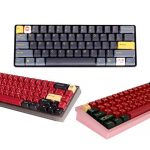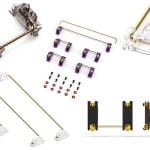
Finding the perfect keyboard layout is part of the fun. Unfortunately, most keyboard enthusiasts lack the knowledge to make an informed decision regarding their keyboard layout preference. Typically, our preference revolves around these three popular layouts, namely the ANSI, ISO, and JIS.
Expanding the discussion, let us take the time to learn about two (2) layouts, namely the ortholinear and staggered layouts. Both layouts have significant differences – one of which is the alignment of their keys. An ortholinear keyboard’s keys are consistently and straightly aligned with each other in contrast to a staggered keyboard wherein its keys form a diagonal pattern.
If ortholinear and staggered keyboard layouts are new terms to you, then read further on. In this article, we will be discussing the differences between the two layouts. Likewise, this will be your guide on what is best for you according to your preferences.
What is an Ortholinear Keyboard?
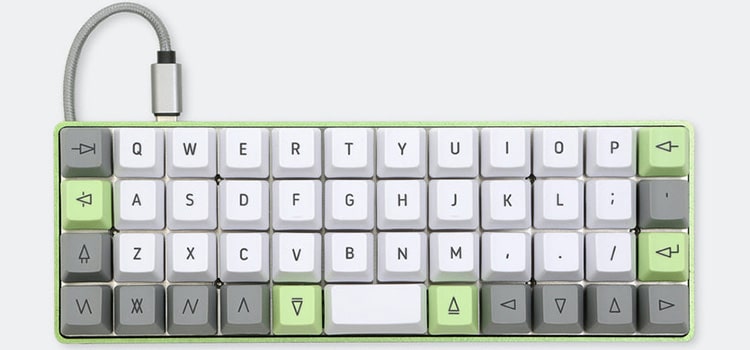
An ortholinear keyboard is a keyboard that aligns in a columnar manner. This means that the keys are in perfect rows, up and down and left to right. This layout minimizes finger movement from key to key and is ideal for professional typists who endure long hours of practice.
Most ortholinear keyboards come in a 40% form factor, such as the ever-famous BM40 Keyboard and the widely sought-after Planck EZ. However, some ortholinear keyboards also come in bigger form factors, such as the ID75, a 75% keyboard.
What is a Staggered Keyboard?

On the other hand, a staggered keyboard is typical for many keyboards, including your built-in laptop keyboard. It comes from the design of the vintage typewriter wherein each key must avoid bumping into one another for smooth registration.
Because of the modernization of the keyboard, there is no reason that the keyboard layout should still be staggered. Yet, this is the most widely implemented layout up to now for a reason. As the saying goes: if it ain’t broke, don’t fix it.
Ortholinear vs. Staggered Keyboard
Characteristics

The main difference between an ortholinear and a staggered keyboard is the layout of its keys. In ortholinear keyboards, the keys are perfectly aligned in columns and rows, and the keys in ortholinear keyboards make a uniform grid. Its uniform alignment comes from most of its keys being 1u in size. However, a bigger (typically 2u) spacebar may be implemented for easier touch typing in some layouts.
In your typical staggered layout keyboards, accent keys (such as the tab, caps lock, and shift keys) are bigger than your alphanumeric keys. Moreover, the keys align diagonally instead of up and down or left to right.
Typing Experience
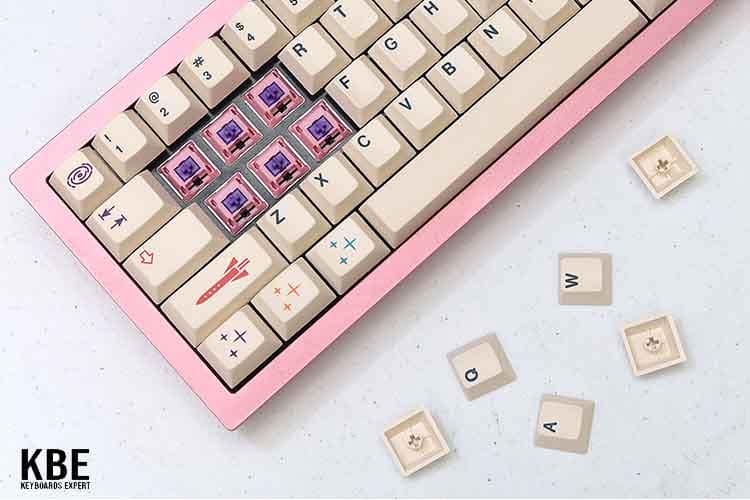
Moving on to typing experience, users of the ortholinear layout report that typing on aligned keys is less straining on the fingers since there is less movement. After prolonged use, the staggered layout may cause finger fatigue as opposed to the ortholinear layout, which does not.
However, the ortholinear keyboard’s uniformity in sizes can be detrimental to touch typists. The staggered layout makes it easier to touch type since the sizes of the keys can guide your finger placement. On the other hand, ortholinear keyboards may take some time for you to get used to. Likewise, it may also take some time for you to get back on track with your typing speed in the typical staggered layout.
Customizability
An ortholinear keyboard is more accessible to customize than your typical staggered keyboard. This is because the size of its keys is much more uniform, and you wouldn’t need to buy separate modifiers; the alphanumeric base could be enough, especially since ortholinear keyboards typically come in smaller form factors.
Because the ortholinear board is typically smaller in size, this type of keyboard often forces its user to play with layers to maximize its use. Contrarily, staggered keyboards are often used straight out of the box, ignoring its remappable keys function.
Convenience
The convenience of smaller form factors definitely beats bigger form factors. However, the switch from a staggered layout to an ortholinear layout is not an easy one. You should expect to need some time to get used to the new layout before typing as fast as you would when using a staggered layout keyboard.
Why use an Ortholinear Keyboard?
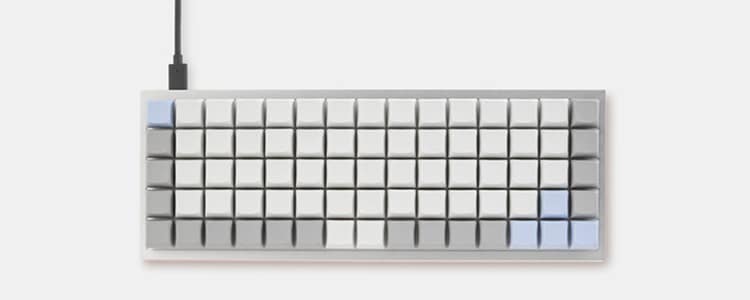
Using an ortholinear keyboard would minimize finger fatigue. Even after prolonged hours of typing, an ortholinear keyboard avoids finger strain because of minimal finger movement. Its ergonomics also allows for more keys in a compact space since it is straightly aligned.
An ortholinear keyboard, especially in smaller form factors, is easier to carry and travel with than your typical staggered keyboard.
If you need a Numpad on your keyboard, you can opt for a compact ortholinear keyboard and easily remap the number keys in another layer. A staggered layout remapped Numpad would be a little weird to use since it would not be aligned properly.
Overall, an ortholinear keyboard would be a great addition to your mechanical keyboard collection and would provide a better typing experience after long hours of use.
Why You Should Opt For a Staggered Keyboard Instead
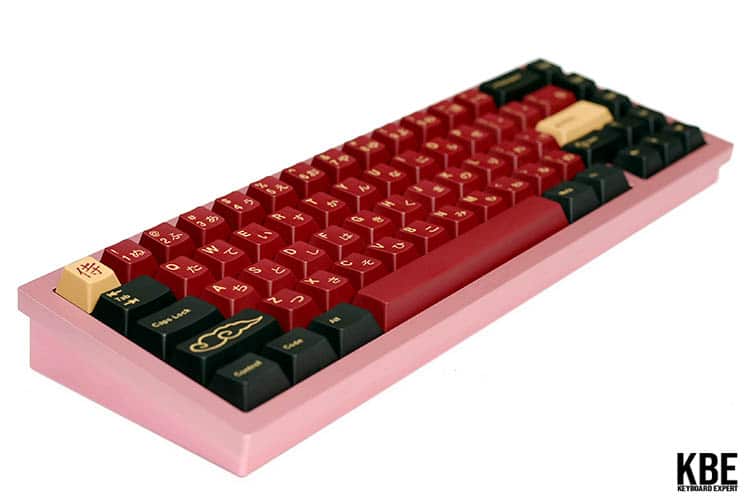
A regular staggered keyboard is easier to type on as you are already used to its layout. There is no learning curve should you decide to acquire a staggered external keyboard. In ortholinear keyboards, you would need to spend some time getting acquainted with the layout and layers, if ever you remap chosen keys.
Staggered layout keyboards may not be as unique and novelty as ortholinear keyboards, but more customization options are available when using a staggered keyboard. Keyboard plates and foams come pre-cut to fit staggered keyboards more often than not.
The market is also much more saturated regarding staggered keyboards than ortholinear keyboards. This means that your keyboard model options are much more plentiful when you choose to buy a staggered keyboard as opposed to the limited options when acquiring an ortholinear keyboard.
Summary

In sum, there is value in both ortholinear and staggered layout keyboards. Ortholinear keyboards are aligned so that there is minimal finger movement between each keypress, while staggered keyboards take from the vintage typewriter design and are commonly used in keyboard manufacturing.
The ortholinear keyboard is a novelty keyboard that is better in terms of ergonomics, while the staggered layout keyboard is your typical board that provides a wide range of options when buying one. Learning the ortholinear keyboard layout may take some time to get used to, while the staggered keyboard layout requires no learning curve but may cause fatigue after long hours of use.
It all boils down to preference and typing needs. Are you a typist that spends more time than the average typing? If so, you can try an ortholinear keyboard to minimize finger fatigue. If not, then acquiring an ortholinear keyboard is not miles better than having a staggered keyboard because they perform the same essential functions.

